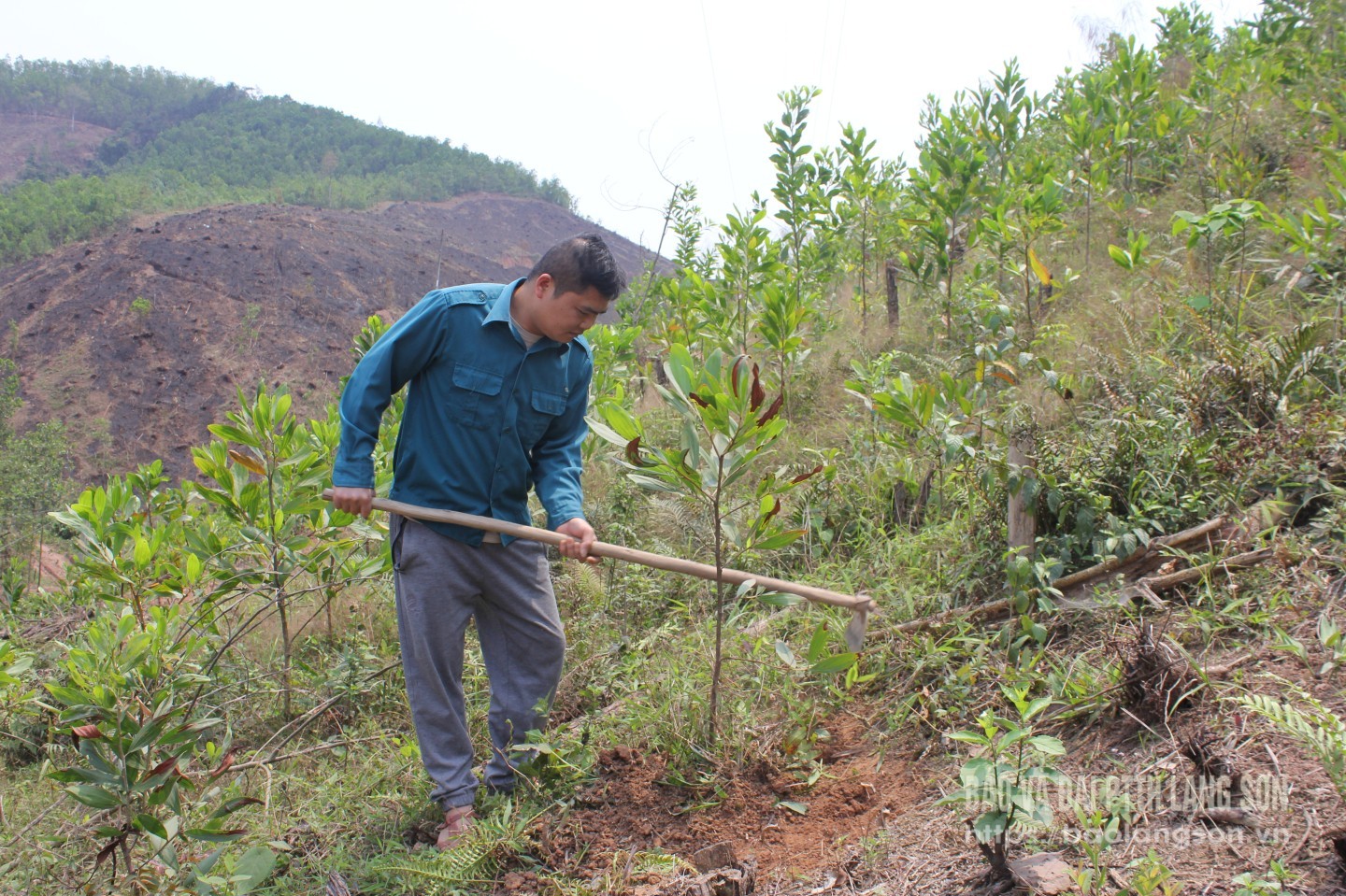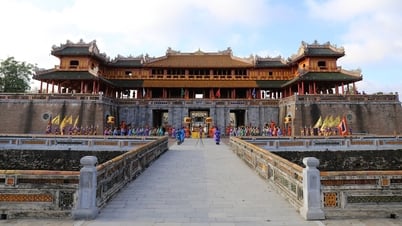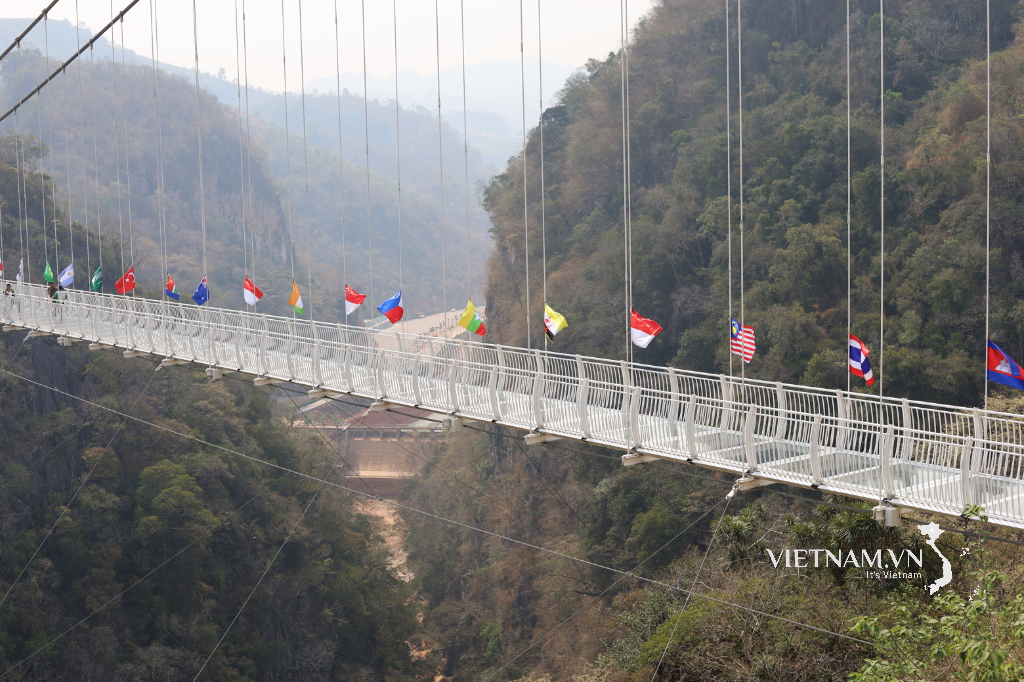According to the Department of Agriculture and Environment, from 2020 to the present, 53 projects in the province have affected over 1,353 hectares of forest land. To compensate for this area, project owners are responsible for reforestation. However, the results have not been very promising. After 5 years, only 2 projects have independently organized reforestation with an area of 113.5 hectares; 44 projects have chosen to pay into the province's Forest Protection and Development Fund with a total area of over 1,181 hectares requiring reforestation; 2 projects with an area of over 4.8 hectares have exceeded the deadline and need to resubmit approval for changing the land use purpose of the forest to other purposes; and 5 projects have not yet fulfilled their obligation to replant forests with an area of nearly 54 hectares.
Lack of vacant land
Mr. Nguyen Huu Chien, Director of the Department of Agriculture and Environment, said: the department has issued many directives, approved unit prices, and guided project owners to fulfill their obligations to plant replacement forests according to the regulations of the Ministry of Agriculture and Environment and the actual conditions of the province. However, implementation faces many obstacles. One of the biggest difficulties is the issue of land availability. According to current regulations, replacement forest planting is prioritized on land planned for special-use forests, protection forests, and production forests allocated to state-owned enterprises or supported for planting large timber forests for households and individuals; however, the reality in Lang Son is not very favorable.
"For special-use forests, vacant land suitable for reforestation has been allocated for planting according to regulations. The remaining vacant land is mainly high mountains, rocky outcrops, and areas with difficult access for transporting seedlings and fertilizers. For protection forests, the review of vacant land is carried out annually, and targets have been assigned to districts for reforestation in areas with suitable conditions. Although there is still vacant land, it is scattered and small, located in high mountainous areas with complex terrain, border areas that have not yet been cleared of bombs and mines, and some areas used as grazing grounds for livestock... therefore, there is also a shortage of land for reforestation," informed Mr. Nguyen Huu Hung, Head of the Forest Protection Department of Lang Son province.
People in Bac Lang commune, Dinh Lap district, take care of acacia trees in the forest.
Regarding production forest land, regulations supporting the planting of large timber forests for households and individuals are hampered by new regulations on credit support for investment in large timber forest planting, making these entities ineligible to participate in reforestation using funds from the provincial Forest Protection and Development Fund. State-owned enterprises under the Vietnam Forestry Corporation are also reluctant to participate due to regulations requiring an increase in charter capital when using these funds.
Observations in Loc Binh district show that, like other districts, reforestation efforts have faced numerous difficulties in finding suitable land. The main reason is that vacant land for reforestation is fragmented, small, and far from residential areas, primarily located in remote and isolated regions with rugged terrain and difficult access. Furthermore, many reforestation areas are situated in complex terrains, making it difficult to transport seedlings and fertilizers, thus increasing transportation costs for seedlings, materials, and labor. Some areas also have poor soil quality requiring improvement before planting, further increasing initial costs, which are significant obstacles to this work.
Mr. To Bach, a civil servant from the Department of Agriculture and Environment of Loc Binh district, shared: "Because of the above reasons, from 2020 to the present, only 2 projects have been implemented in Loc Binh with a total area of 56.3 hectares in Nam Quan and Huu Lan communes, with direct financial support for participating people amounting to 3.8 billion VND."
Land availability issues have led to a situation where many projects have paid into the province's Forest Protection and Development Fund (totaling over 126 billion VND) but have yet to actually implement reforestation. Therefore, out of a total of 53 reforestation projects, 9 projects with an area of 336 hectares and corresponding funds of over 33 billion VND remain "dormant" in the fund due to the lack of allocated land. Thus, as of now, the province's Forest Protection and Development Fund still has over 64 billion VND (including maintenance costs for 2024 and funds not yet disbursed to investors for reforestation) that cannot be disbursed.
Regulatory issues
Besides land availability issues, regulatory obstacles also pose significant challenges to reforestation efforts.
According to Circular 25/2022/TT-BNNPTNT dated December 30, 2022, issued by the Ministry of Agriculture and Rural Development (now the Ministry of Agriculture and Environment), which regulates reforestation, when converting forest land to other uses, the project owner must pay the reforestation fee within 10 days of receiving the document from the Provincial People's Committee. However, even with written reminders, the authorities have yet to impose specific penalties for late payment, thus affecting the overall progress.
Another issue is the bidding process for labor in reforestation projects under the 2023 Bidding Law. According to initial guidelines, assigning the task to local communities only applies to national target programs and public investment programs. This raises concerns, as the land for reforestation is located in villages and hamlets where people have cultivated the land for generations. If the winning bidder is a company from elsewhere, it will be difficult to gain the cooperation of local people, potentially leading to security risks and hindering inspection and supervision.
Furthermore, controlling the expenditure on reforestation as stipulated in Circular 24/2024/TT-BNNPTNT dated December 12, 2024, issued by the Ministry of Agriculture and Rural Development (now the Ministry of Agriculture and Environment), which amends and supplements several articles of circulars in the forestry sector, is also facing difficulties due to the lack of specific guidance on the expenditure control process through the State Treasury. In addition, the regulation on collecting additional compensation for the difference in unit prices when reforestation sites are relocated is not truly effective, as the investor has already been confirmed as having fulfilled their payment obligations in the original locality…
The Director of the Department of Agriculture and Environment of Lang Son province stated: Faced with numerous difficulties in reforestation efforts, the Department of Agriculture and Environment of Lang Son province has proactively proposed to the Ministry of Agriculture and Environment to consider expanding the scope of this obligation to include land planned for production forests. This proposal is accompanied by the application of an investment support mechanism similar to Decree 58/2024/ND-CP on investment policies in forestry and credit support for large-timber forest planting, with the hope of exploiting the potential land resources from the community. In addition, it proposes amending current legal regulations, especially regarding the deadline for paying reforestation fees and adding strict penalties for cases of delay or deliberate failure to fulfill the obligation.
Simultaneously, the Department of Agriculture and Environment is implementing a comprehensive set of solutions to gradually address the "bottlenecks." Specifically, a thorough review and assessment of existing land resources is a top priority, achieved through close coordination with local authorities to conduct field surveys, classify land according to its potential use, and develop appropriate reforestation plans for each area. Currently, over 281 hectares of land (not yet planted) are undergoing survey, design, and bidding procedures for reforestation (Trang Dinh over 128 hectares, Van Lang over 3 hectares, Dinh Lap nearly 120 hectares; Mau Son Special Forest Management Board over 30.5 hectares).
In the coming period, the task of reforestation will continue to be implemented. Although there are still many difficulties and obstacles, with the determination of the authorities at all levels, the active participation of the community, and the solutions that have been researched and proposed in a systematic way, it is believed that Lang Son will have more forest areas reforested, making an important contribution to the sustainable forestry development of the province and the country.
Source: https://baolangson.vn/trong-rung-thay-the-kho-khan-bua-vay-5048535.html












































































































Comment (0)